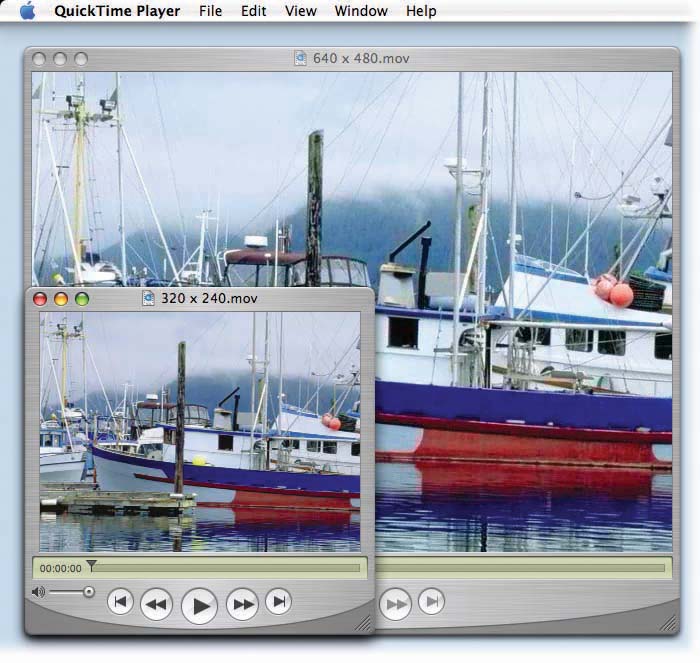Understanding QuickTime
A computer displays video by flashing many still images in rapid succession. But if you’ve ever worked with graphics, you know that color graphics files are data hogs. A full-screen photograph file might occupy 5 or 10 MB of space on your hard drive and take several seconds to open up.
Unfortunately, most computers are far too slow to open up 30 full-screen, photographic-quality pictures per second. Even if they could, full-screen, full-quality QuickTime movies would still be mostly useless. Each would consume hundreds of gigabytes of disk space, requiring days or weeks to download from the Web or by email—a guaranteed way to annoy citizens of the Internet and doom your movie-making career to obscurity.
That’s why most QuickTime movies aren’t full-screen, photographic-quality films. In fact, most QuickTime movies are much “smaller”—in three different dimensions:
The window is much smaller. It’s rare to see a QuickTime movie that, when played back, fills the computer screen. Instead, most QuickTime movies today play in a much smaller window (see Figure 12-3), therefore requiring far less data and resulting in far smaller files.

Figure 12-3. Here’s the same movie in two standard playback sizes. Movies designed for playback from the hard drive are often 640 pixels wide, 480 tall (640 x 480). Movies intended for the Web email are smaller—often 320 x 240. (Movies ...
Get iMovie 6 & iDVD: The Missing Manual now with the O’Reilly learning platform.
O’Reilly members experience books, live events, courses curated by job role, and more from O’Reilly and nearly 200 top publishers.

